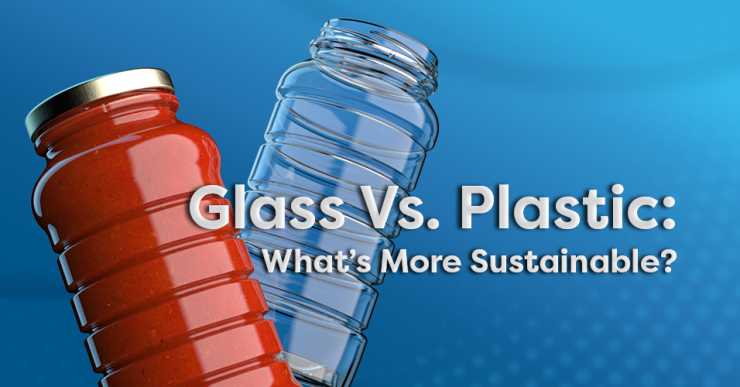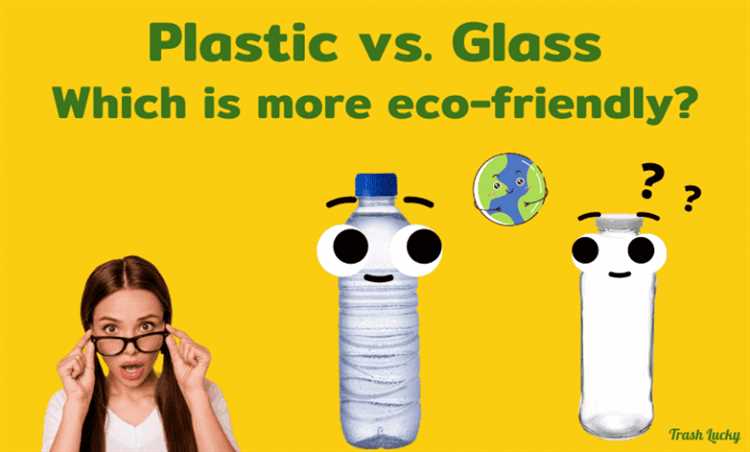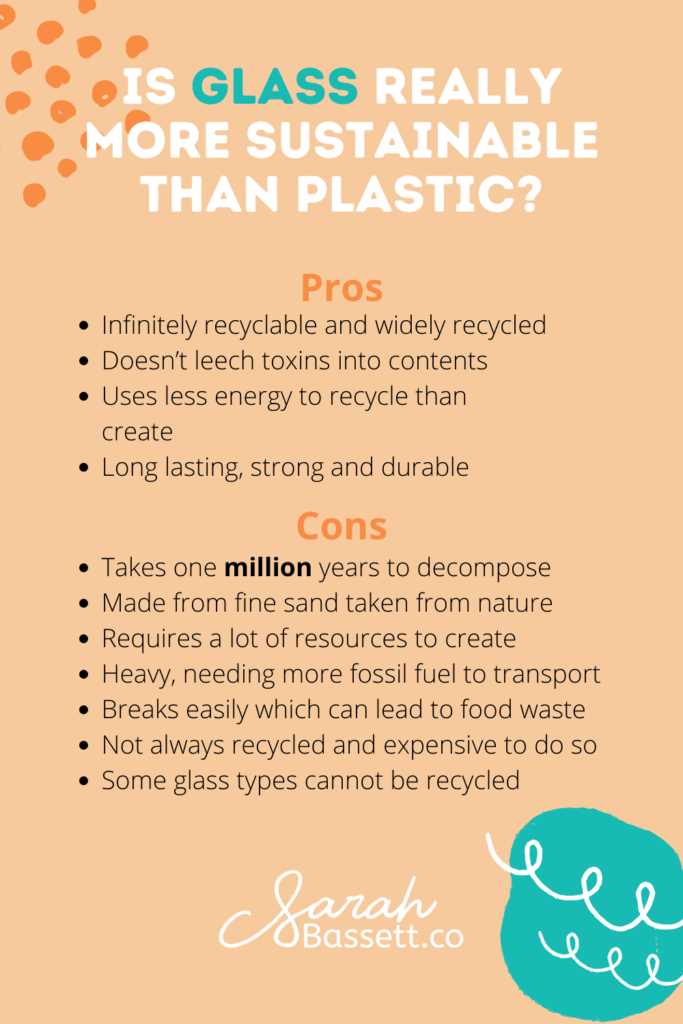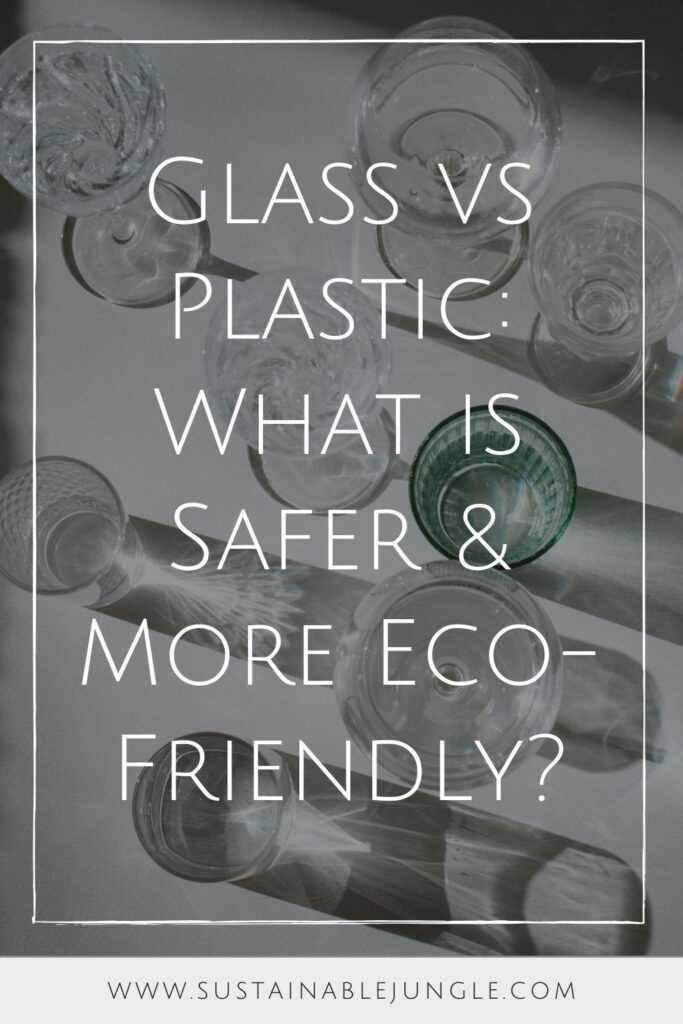
With the increasing focus on environmental sustainability, the debate between glass and plastic has gained significant attention. Both materials have their advantages and disadvantages, and the question of which is more environmentally friendly is a complex one. In this article, we will explore the environmental impact of both glass and plastic, considering factors such as production, recycling, and disposal.
Glass, a versatile material that has been used for centuries, is often hailed as a more eco-friendly alternative to plastic. One of the key advantages of glass is its recyclability. Glass can be recycled indefinitely without loss of quality, reducing the need for raw materials and energy consumption. Furthermore, the production of glass produces fewer greenhouse gas emissions compared to plastic manufacturing.
On the other hand, plastic, with its lightweight and durable properties, has become widely used in various industries. While plastic is often viewed as harmful to the environment, it does have some environmental benefits. Plastic is lighter than glass, resulting in lower transportation emissions. Additionally, plastic production requires less energy and water compared to glass manufacturing. However, plastic recycling poses significant challenges, as not all types of plastic can be recycled, and the process is energy-intensive.
In conclusion, glass and plastic both have their environmental pros and cons. While glass is highly recyclable and has lower emissions during production, plastic offers benefits such as lightweight and energy-efficient manufacturing. Ultimately, the environmentally friendly choice depends on various factors, including the particular application, recycling infrastructure, and proper waste management. To mitigate the environmental impact of both glass and plastic, it is crucial to prioritize waste reduction, recycling, and the development of sustainable alternatives.
- Glass Manufacturing Process
- Comparison of Energy Consumption
- Use of Raw Materials
- Plastic Production Process
- Fossil Fuel Dependence
- Plastic Production
- Glass Production
- Recycling and Waste Management
- Glass Recycling
- Plastic Recycling
- Question-answer:
- Which is better for the environment, glass or plastic?
- How does glass recycling compare to plastic recycling?
- What are the advantages of using glass over plastic?
- Are there any downsides to using glass instead of plastic?
- What can individuals do to reduce their use of plastic and glass?
- Which is better for the environment: glass or plastic?
- What are the advantages of using glass over plastic?
Glass Manufacturing Process
Glass is a versatile material that is used in a variety of applications ranging from bottles and windows to electronics and construction. The manufacturing process of glass involves several steps to ensure its quality and durability.
1. Raw materials: The primary ingredients used in making glass are silica sand, soda ash, limestone, and recycled glass, also known as cullet. These materials are mixed together in specific proportions to create a glass batch.
2. Melting: The glass batch is then fed into a furnace, where it is heated to extremely high temperatures, typically around 1500°C (2730°F). The intense heat causes the materials to melt and form a molten glass mixture.
3. Refining: During the refining stage, any impurities or air bubbles in the molten glass are removed. This helps improve the clarity and strength of the final glass product. The molten glass is constantly stirred or agitated to ensure uniformity.
4. Forming: Once the molten glass is refined, it is ready to be formed into the desired shape. There are several methods for shaping glass, including blowing, pressing, and casting. These methods allow the molten glass to be transformed into various products such as bottles, sheets, or fibers.
5. Annealing: After the glass is formed, it undergoes a process called annealing. The glass is slowly cooled to room temperature to relieve any internal stresses and enhance its strength. This step is crucial to prevent the glass from shattering or breaking easily.
6. Finishing: Finally, the glass products are inspected, cut, polished, and sometimes coated or treated to improve their appearance and functionality. This may involve processes such as etching, sandblasting, or applying a protective coating.
Glass manufacturing requires a significant amount of energy, especially during the melting stage. However, glass is a highly recyclable material, and using recycled glass reduces the energy required for production. Additionally, glass is inert and does not release harmful chemicals into the environment, making it a more environmentally friendly choice compared to plastic.
Comparison of Energy Consumption
When it comes to energy consumption, glass and plastic have different environmental impacts. Glass production requires a significant amount of energy, especially in the melting process. The raw materials for glass, such as silica, soda ash, and limestone, need to be heated at high temperatures, which can contribute to greenhouse gas emissions.
Plastic production, on the other hand, generally requires less energy than glass. The process involves extracting petroleum or natural gas to produce the raw materials for plastic, which are then heated and molded into various shapes. While the extraction and refining of petroleum and natural gas do consume energy, the overall energy consumption in plastic production is lower compared to glass.
Furthermore, the transportation and disposal of glass and plastic also contribute to their energy consumption. Glass is heavier and more fragile, which leads to additional energy being used in the transportation process. Plastic, however, is lighter and more durable, reducing energy consumption during transportation.
In terms of disposal, glass can be recycled indefinitely without losing its quality, which reduces its overall energy consumption. Plastic, on the other hand, has limitations in terms of recycling. While some types of plastic can be recycled, others cannot and end up in landfills or incinerated, resulting in wasted energy.
| Glass | Plastic | |
|---|---|---|
| Raw Materials | High energy consumption for extraction and processing | Lower energy consumption for extraction and processing |
| Production | Requires significant energy for the melting process | Requires less energy compared to glass |
| Transportation | Heavier, leading to higher energy consumption | Lighter, reducing energy consumption |
| Disposal | Recyclable without losing quality | Limited recycling options, leading to wasted energy |
Use of Raw Materials
When comparing the environmental impact of glass and plastic, it is important to consider the use of raw materials. Glass is made from natural resources such as sand, soda ash, and limestone. These materials are abundant in most regions and are easily accessible. Additionally, glass is a 100% recyclable material, which means it can be melted and reformed without losing its quality or purity. This makes glass a sustainable and environmentally friendly option.
On the other hand, plastic is derived from fossil fuels, primarily crude oil and natural gas. The extraction and processing of these raw materials can have a significant impact on the environment, including air and water pollution, as well as greenhouse gas emissions. Furthermore, the production of plastic requires a large amount of energy, contributing to the depletion of non-renewable energy sources.
Unlike glass, plastic is not easily recyclable. While some types of plastic can be recycled, the process is more complex and less efficient compared to glass recycling. As a result, a significant amount of plastic waste ends up in landfills or polluting the environment, taking hundreds of years to decompose.
In conclusion, the use of raw materials in the production of glass is more sustainable and environmentally friendly compared to plastic. Glass is made from abundant natural resources and is 100% recyclable, while plastic is derived from fossil fuels and is not easily recyclable. Making conscious choices about the materials we use can help minimize our impact on the environment and create a more sustainable future.
Plastic Production Process
Plastic production is a complex and resource-intensive process that involves several steps. While plastic is a highly versatile material that has revolutionized many industries, its production has significant environmental impacts.
1. Raw Material Extraction: The first step in plastic production is the extraction of raw materials. Common raw materials for plastic production include petroleum, natural gas, and coal. These non-renewable resources are extracted through mining or drilling processes, causing habitat destruction and pollution.
2. Refinement and Polymerization: After extraction, the raw materials undergo refinement to remove impurities. The refined materials are then subjected to a polymerization process. Polymerization involves chemically combining the monomers (small molecules) to form long chains of polymers, which give plastic its structure and properties.
3. Additives and Coloring: To enhance the plastic’s properties, various additives are added during the production process. These additives may include plasticizers to increase flexibility, antioxidants to prevent degradation, flame retardants, and UV stabilizers. Colorants are also added to give plastic its desired color.
4. Molding and Shaping: Once the plastic is ready, it is molded and shaped according to the desired product. This can involve processes such as injection molding, blow molding, or extrusion. These processes require energy and often involve the use of high temperatures and chemicals.
5. Distribution and Recycling: After production, the plastic products are distributed to their respective markets. However, due to the significant environmental impact of plastic waste, recycling initiatives have become vital. Recycling helps to reduce the demand for raw materials and alleviate the burden on landfill sites.
Despite its numerous applications and benefits, the production process of plastic poses several environmental challenges. These include the extraction of non-renewable resources, energy consumption, greenhouse gas emissions, and the generation of plastic waste. As consumers, it is important to consider alternatives like glass and actively participate in recycling efforts to minimize the environmental impact of plastic production.
Fossil Fuel Dependence

Both glass and plastic production rely heavily on fossil fuels, namely oil and natural gas. These non-renewable resources are extracted from the earth through drilling and mining, which can have negative environmental impacts such as habitat destruction and water pollution. The extraction and refining processes also contribute to greenhouse gas emissions that contribute to climate change.
Plastic Production
The production of plastic requires the extraction and processing of fossil fuels, primarily oil and natural gas. These raw materials are used to create the building blocks of plastic, such as ethylene and propylene. The process of refining these materials into plastic emits greenhouse gases and creates toxic byproducts.
Additionally, plastic production is an energy-intensive process, requiring a significant amount of electricity. The majority of electricity comes from burning fossil fuels, further contributing to greenhouse gas emissions.
Glass Production

Glass production also relies on fossil fuels, particularly natural gas. The process of melting raw materials, such as sand, limestone, and soda ash, requires intense heat, which is typically generated by burning natural gas. This combustion process releases carbon dioxide and other greenhouse gases into the atmosphere.
However, it is worth noting that glass can be produced using renewable energy sources, such as solar or wind power, which can significantly reduce its environmental impact.
Overall, both glass and plastic production contribute to fossil fuel dependence and its associated environmental impacts. However, the production of plastic has a higher carbon footprint due to its reliance on oil and gas extraction, as well as its energy-intensive manufacturing process.
Recycling and Waste Management
Recycling and waste management are crucial aspects of the sustainability effort. Both glass and plastic can be recycled, but the efficiency and environmental impact of the recycling process differ.
Glass Recycling

Glass is 100% recyclable and can be recycled indefinitely without losing its quality. The process involves collecting glass bottles and jars, separating them by color, and crushing them into small pieces called cullet. The cullet is then melted and molded into new glass products. Glass recycling reduces the demand for new raw materials and energy consumption, leading to significant environmental benefits.
Plastic Recycling

Plastic recycling, on the other hand, poses more challenges due to the different types of plastic and the complexity of the recycling process. Most plastics have limited recycling capabilities, and the quality of recycled plastic often decreases with each cycle. Additionally, sorting plastic waste by type and removing contaminants can be difficult. Despite these challenges, plastic recycling still helps reduce the consumption of new raw materials and energy.
A key issue with plastic waste management is the large amount that ends up in landfills or as litter in the environment. Plastic takes hundreds of years to decompose, and when it does, it releases harmful chemicals into the soil and water. This contributes to pollution and poses a threat to wildlife.
| Recyclable Material | Environmental Impact |
|---|---|
| Glass | Very low impact, can be recycled indefinitely |
| Plastic | Higher impact due to limited recycling capabilities and pollution from waste disposal |
In conclusion, while both glass and plastic can be recycled, glass has a more positive environmental impact and is easier to recycle. Plastic recycling is important, but the limited capabilities and pollution associated with plastic waste management make it less environmentally friendly compared to glass.
Question-answer:
Which is better for the environment, glass or plastic?
Both glass and plastic have environmental impacts, but glass is generally considered to be more environmentally friendly. Glass is made from natural materials, like sand and limestone, and can be recycled indefinitely without losing quality. It also does not release harmful chemicals when in contact with food or beverages. On the other hand, plastic is made from fossil fuels and can take hundreds of years to decompose. However, not all glass and plastic products are created equal, and their environmental impact can vary depending on factors such as production methods, transportation, and recycling rates.
How does glass recycling compare to plastic recycling?
Glass recycling tends to be more efficient and effective than plastic recycling. Glass can be recycled indefinitely without losing quality, and the process of recycling glass requires less energy and resources compared to producing new glass from raw materials. On the other hand, plastic recycling can be more challenging due to the different types of plastic and the need for specialized recycling facilities. Additionally, plastic recycling often results in a lower quality product compared to the original plastic.
What are the advantages of using glass over plastic?
Using glass instead of plastic has several advantages. Firstly, glass is made from natural materials and can be recycled indefinitely without losing quality. This makes it a more sustainable option compared to plastic, which is made from fossil fuels and can take a long time to decompose. Glass also does not release harmful chemicals when in contact with food or beverages, making it a safer choice. Additionally, glass containers can be reused multiple times, reducing the need for single-use packaging.
Are there any downsides to using glass instead of plastic?
While glass is generally considered more environmentally friendly, it does have some downsides compared to plastic. Glass is heavier and more fragile than plastic, making it more expensive to transport and more prone to breakage. Glass also requires more energy to produce compared to plastic. However, the long lifespan and recyclability of glass can help offset these disadvantages in terms of overall environmental impact.
What can individuals do to reduce their use of plastic and glass?
There are several actions individuals can take to reduce their use of plastic and glass. Firstly, it’s important to minimize the use of single-use plastics, such as straws, bags, and water bottles, by opting for reusable alternatives. When it comes to glass, individuals can choose products that come in glass containers instead of plastic ones, and prioritize buying items in bulk to reduce packaging waste. Recycling is also crucial, so individuals should make sure to recycle any glass or plastic products that are accepted in their local recycling programs.
Which is better for the environment: glass or plastic?
In terms of environmental impact, glass is generally considered better than plastic. Glass is made from natural materials like sand, whereas plastic is derived from fossil fuels. Glass is also 100% recyclable and can be reused many times without losing its quality. Plastic, on the other hand, is not as easily recyclable and often ends up in landfills or oceans, causing harm to wildlife and ecosystems.
What are the advantages of using glass over plastic?
There are several advantages of using glass over plastic. First, glass is more durable and can be reused many times without deteriorating. This makes it a sustainable option. Second, glass is 100% recyclable and does not lose its quality when recycled. It can be melted down and turned into new glass products. Additionally, glass does not contain harmful chemicals like plastic does, making it a safer option for you and the environment.